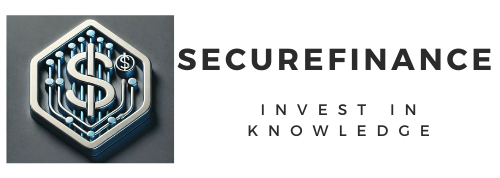
Decentralized Finance, or DeFi, has revolutionized the way people interact with money, opening up innovative ways to generate income. By cutting out intermediaries, DeFi empowers users to earn passive income directly through blockchain-powered systems like staking, lending, and yield farming. But how do you navigate this evolving space? Let’s explore the step-by-step methods and strategies for leveraging DeFi to achieve financial independence.
Understanding Decentralized Finance (DeFi)
What is DeFi?
Decentralized Finance, commonly referred to as DeFi, is a blockchain-based financial ecosystem. Unlike traditional banks, DeFi platforms operate without intermediaries, allowing users to perform transactions peer-to-peer. From lending to trading, DeFi applications use smart contracts to ensure transparency and automation.
Key Principles of DeFi
DeFi operates on open-source protocols, meaning anyone can access, audit, or modify the code. It promotes inclusivity, transparency, and financial control, offering a secure and accessible alternative to centralized systems.
Why DeFi is Disrupting Traditional Finance
Advantages Over Traditional Systems
DeFi eliminates the middleman, resulting in reduced fees and faster transactions. Additionally, users maintain full control over their funds, offering a level of transparency and security that traditional institutions struggle to match.
Risks to Consider
While DeFi boasts many advantages, it’s not without its risks. From volatile markets to smart contract vulnerabilities, understanding these risks is essential to safely earning passive income.
Getting Started with DeFi
Setting Up a Crypto Wallet
Before diving into DeFi, you’ll need a crypto wallet, such as MetaMask or Trust Wallet. These wallets store your private keys securely and allow interaction with DeFi platforms.
Choosing the Right Blockchain Network
Popular blockchain networks like Ethereum, Binance Smart Chain, and Solana host numerous DeFi applications. Ethereum remains a favorite, though newer blockchains offer lower fees.
What is Passive Income in DeFi?
Definition and Importance
Passive income in DeFi involves earning money without active involvement. Methods like staking, lending, or participating in liquidity pools allow users to earn rewards simply by holding or deploying assets.
Popular Use Cases
Some common ways to earn include staking tokens, providing liquidity to decentralized exchanges, or lending assets on platforms like Compound or Aave.
Staking as a Passive Income Stream
What is Staking?
Staking involves locking up your crypto to support a blockchain network’s operations, such as validating transactions. In return, you earn rewards, often in the form of additional tokens.
Choosing the Best Coins for Staking
Opt for established projects with a strong track record, such as Ethereum (post-merge), Cardano, or Polkadot. Each offers unique reward rates and lock-up terms.
Liquidity Mining and Yield Farming
Overview of Liquidity Mining
Liquidity mining rewards users for providing assets to a liquidity pool on decentralized exchanges (DEXs) like Uniswap. Users earn a share of transaction fees and additional tokens.
How Yield Farming Works
Yield farming amplifies returns by moving assets across different platforms to optimize interest rates. While lucrative, it requires constant monitoring and strategic planning.
Lending Platforms in DeFi
How to Lend Crypto
DeFi lending involves depositing your crypto into platforms like Aave, Compound, or MakerDAO. Borrowers pay interest, which you earn as a lender.
Comparing Platforms like Aave and Compound
Aave offers flexible terms and multi-collateral loans, while Compound is known for its user-friendly interface and steady returns. Compare rates to maximize earnings.
Earning Through DeFi Savings Accounts
Introduction to Crypto Savings Accounts
DeFi savings accounts function like traditional bank savings accounts but often provide significantly higher interest rates, sometimes exceeding 10% annually.
Comparing Interest Rates
Platforms like Celsius and Nexo offer competitive rates, but be sure to verify the security and stability of the service.
The Role of Stablecoins in DeFi
Why Stablecoins are Popular
Stablecoins like USDT, USDC, and DAI minimize risk by maintaining a stable value. They’re an excellent choice for conservative investors seeking steady returns.
Earning Interest on Stablecoins
By lending stablecoins or depositing them in high-yield savings accounts, you can earn consistent returns with minimal exposure to market volatility.
FAQs
- What is the easiest way to start earning passive income in DeFi?
Setting up a wallet and staking coins is beginner-friendly and relatively low-risk. - Are DeFi platforms safe?
While many platforms are secure, always research the team, audits, and community reputation. - How much can I earn through DeFi?
Returns vary based on method and risk level, ranging from 5% to over 100% annually. - Is DeFi income taxable?
Yes, consult a tax professional to understand reporting requirements in your jurisdiction. - Can I lose money in DeFi?
Yes, risks include price volatility, smart contract bugs, and platform failures. - What are the best platforms for DeFi beginners?
Consider Aave, Compound, or Uniswap for their simplicity and reliability.
You Can Also Read : How to Ensure Your Digital Assets Are Included in Your Estate Plan
Conclusion
DeFi represents a paradigm shift in the financial world, offering unprecedented opportunities for passive income. By understanding its mechanisms and adopting secure practices, anyone can leverage DeFi to grow their wealth. As the landscape evolves, staying informed and diversifying strategies will be crucial for long-term success.
